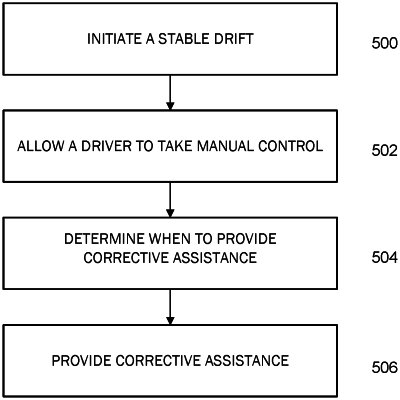| CPC B60W 30/02 (2013.01) [B60W 10/02 (2013.01); B60W 10/06 (2013.01); B60W 10/08 (2013.01); B60W 10/18 (2013.01); B60W 10/20 (2013.01); B60W 30/09 (2013.01); B60W 60/0015 (2020.02)] | 17 Claims |

|
1. A computer implemented method, comprising:
initiating, by an ECU of a vehicle, a stable drift;
obtaining, by the ECU, signals associated with a driver of the vehicle performing simulated drift maneuvers on one or more interfaces of the vehicle;
interpreting, by the ECU, the signals associated with the simulated drift maneuvers as a request for a desired drift condition;
limiting, by the ECU, the desired drift condition to a stable drift condition which approximates the desired drift condition; and
optimizing, by the ECU, control of the vehicle across multiple actuators of the vehicle in order to achieve the stable drift condition which approximates the desired drift condition.
|